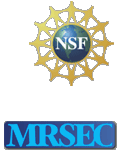Curriculum Development
Biomimetics FIG - Freshmen Interest Group: This group of classes are designed to attract the interest of freshmen and sophomores to biomimetics. In addition, an emphasis is placed on bringing about awareness to current topics in science as part of FIG. This group of classes consists of 1. Biomimetics, 2. Molecular Characterization, 3. Nanobiotechnology and 4. Issues in Science. Classes already accepted as part of the UW curriculum are:
Course description:
Through millions of years of evolution, Mother nature developed pathways to make engineering systems (eyes, bones, catalysis, etc.) that are highly complex in design and efficient in function. Biomimetics a new interdisciplinary field at the confluence of biology, physical sciences and engineering, studies the structures of functions of biological systems, obtains lessons in design and function, and applies these in novel technological applications from bone and tooth regeneration, molecular electronics, to cancer therapy. A group of leading UW professors just set up a center on Biomimetics and will be involved in giving seminars from their latest research for students with multidisciplinary interest.
Course description:
This seminar class will encourage the students involved to discuss their perceptions of how different "minority" groups are defined and viewed in society. The role of different groups in science and the impact of different groups on scientific research will be discussed. Students will be required to participate in oral discussions, to identify different "science in the news" items for those discussions, and to write four brief summaries of classroom discussions over the course of the quarter.
MSE 233 Materials Characterization (3) Sarikaya
Principles and applications of analytical techniques, imaging, diffraction and spectroscopy for materials characterization including crystal structures, texture formation, phase analysis. Nano- and micro-structures of materials including defects and second phases, chemistry, bonding, compositions of materials. Demonstrations and lab experiments involving light scattering and diffraction techniques.
GEMSEC also has developed graduate level lclasses focusing on biomimetics and nanotechnology:
MSE 555 Biomimetics: Bioinspired Design and Processing of Materials (4) Sarikaya
How biological organisms produce materials with controlled structure, chemistry and hierarchy to attain physical properties far superior to traditional engineering materials. Fundamental biological building materials, their synthesis, and their self-assembly with emphasis on examples of soft and hard tissues.CHEM E 554 Nanoscale Science I: Contact Mechanics and Rheology on the Nanoscale (3) Overney
Introductory nanoscale science with emphasis on contact mechanics, principle and concept of forces, scanning force microscopy, tribology (friction, wear, lubrication), rheology, ultrathin organic films, physical properties of polymers, and computer simulation.



